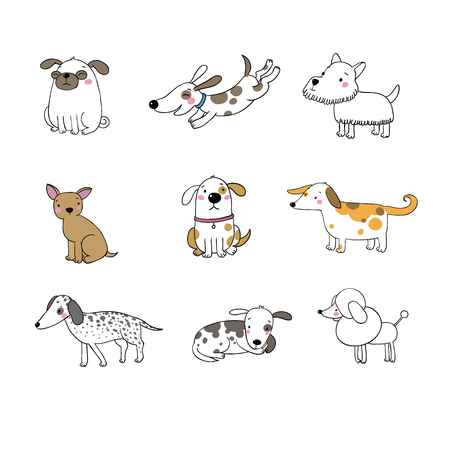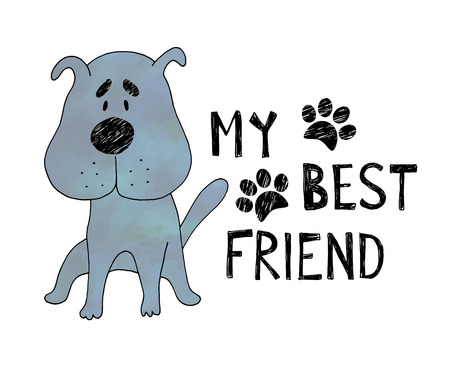Understanding Pet Allergens: Know Your Triggers
If you’re a pet parent who dreams of a cozy, inviting home but sniffles every time your furry friend curls up next to you, you’re not alone. Understanding what pet allergens are and where they come from is the first step toward finding relief without sacrificing the snuggles or the charm of your home.
What Are Pet Allergens?
Pet allergens are tiny proteins found in an animal’s skin cells (dander), saliva, urine, and even their fur. While many folks think hair is the big culprit, it’s actually the dander—those microscopic flakes of skin—that causes most allergy symptoms.
Common Sources of Pet Allergens
| Source | Description | Common Pets Involved |
|---|---|---|
| Dander | Tiny skin flakes that float through the air and settle on surfaces | Cats, dogs, rabbits, birds |
| Saliva | Allergens in saliva stick to fur when pets groom themselves | Cats, dogs |
| Urine & Feces | Proteins found in waste products can trigger reactions, especially in litter boxes or cages | Cats, small mammals (hamsters, guinea pigs), birds |
| Fur/Hair | Can carry dander, pollen, dust, and other allergens around the house | Cats, dogs, rabbits |
| Feathers | Birds shed dander (called “feather dust”), which can become airborne easily | Parrots, cockatiels, parakeets, other pet birds |
Identifying Your Allergy Triggers at Home
It can feel overwhelming to pin down exactly what’s making your nose itch or your eyes water. Here are some tips for figuring out what might be affecting you or your loved ones:
- Track symptoms: Keep a simple journal noting when allergies flare up and what pets were nearby.
- Notice patterns: Do you sneeze more after cuddling with your cat? Or maybe after cleaning your dog’s bedding?
- Consider all pets: Even low-shedding breeds and caged animals like hamsters or birds can trigger allergies.
- Talk to your doctor: Allergy testing can help pinpoint whether it’s truly your pets—or something else like pollen or dust mites.
The Bottom Line on Knowing Your Triggers
The more you know about where allergens come from and how they affect you, the better equipped you’ll be to create a warm, pet-friendly space that everyone can enjoy—without all the sneezing!
2. Establishing Pet-Friendly Cleaning Habits
Creating a home that’s both warm and welcoming for your furry family members—and allergy-friendly for you—starts with building cleaning habits tailored to pet households. With the right routines, you can manage dander, fur, and other allergens without losing the cozy, lived-in charm that makes your house feel like home.
Focus on Key Allergen Hotspots
Not all areas need the same level of attention. By targeting common allergen sources, you can keep things tidy without overdoing it. Here’s a quick guide to help:
| Allergen Source | Where It Collects | How Often to Clean |
|---|---|---|
| Pet Dander | Sofas, rugs, pet beds | Weekly (vacuum & wash covers) |
| Fur | Cushions, blankets, under furniture | Every 2-3 days (lint roller or vacuum) |
| Paw Prints & Saliva | Floors, doors, windows | As needed (wipes & mops) |
Choose the Right Tools for Pet Homes
- Vacuum with HEPA filter: These trap tiny particles like dander and dust mites.
- Microfiber cloths: Great for picking up hair from hard surfaces and shelves.
- Lint rollers: A must-have for quick clean-ups on clothes and soft furnishings.
Keep Cleaning Cozy and Stress-Free
You don’t have to scrub away every trace of your pets to keep allergies under control. Try these tips to maintain a comfy vibe:
- Add washable throws and pillow covers—easy to toss in the laundry when needed and perfect for snuggling.
- Create a pet “mudroom” area by your entryway with a mat and towel for wiping paws before they roam the house.
- Diffuse gentle, pet-safe essential oils like lavender to freshen up rooms without harsh chemicals.
A Little Goes a Long Way
It’s about consistency, not perfection. Just a few targeted habits can make a big difference in keeping your home allergen-aware while still letting your pets be part of everyday life. That way, everyone—furry or not—can relax together in comfort.

3. Making Smart Choices in Home Furnishings
When you love both your pets and a cozy, farmhouse-inspired home, it’s important to choose furnishings that make life easier for allergy sufferers. With a few smart swaps, you can enjoy snuggling up with your furry friends while keeping allergens under control—and never sacrifice that inviting, country feel.
Pick Washable and Low-Allergen Fabrics
Fabrics are magnets for pet hair and dander, so opt for materials that are easy to clean. Removable, machine-washable slipcovers are a lifesaver—just toss them in the wash regularly to keep things fresh. When choosing upholstery or curtains, look for tightly woven fabrics like leather, faux leather, microfiber, or denim. These materials don’t let dander settle in as easily as open-weave textiles.
Allergy-Friendly Fabric Comparison
| Material | Benefits | Cozy Farmhouse Style? |
|---|---|---|
| Leather / Faux Leather | Easy to wipe down; resists dander build-up | Yes (try distressed finishes!) |
| Microfiber | Repels pet hair; machine washable covers available | Yes (soft & casual) |
| Cotton Denim | Tight weave; durable; washable slipcovers common | Absolutely (classic farmhouse) |
| Linen Blend | Smoother than pure linen; some blends are washable | Yes (rustic charm) |
| Velvet / Chenille | Holds onto pet hair & dander; harder to clean | No (better avoided if allergies are an issue) |
Select the Right Rugs and Flooring
If you love area rugs for their warmth and style, stick with low-pile or flatweave options—they trap less dander and are much easier to shake out and clean than thick, shaggy rugs. Machine-washable rugs are especially practical in homes with pets. For floors, hardwood, tile, or luxury vinyl plank make cleaning up fur a breeze and fit beautifully with the farmhouse look.
Farmhouse-Friendly Rug Ideas
- Cotton braided rugs—cozy and easy to toss in the wash.
- Jute or sisal rugs with tight weaves—natural texture without deep fibers for dander to hide.
- Machine-washable patterned rugs—add color and personality while being easy-care.
Decor That Resists Dust and Dander Buildup
The farmhouse style is all about comfort and character, but try to keep decor minimal on surfaces where dust collects. Choose decor pieces that are easy to wipe down—think painted wood trays instead of fabric baskets, or ceramic vases instead of dried floral arrangements that can harbor dust. For throw pillows and blankets, use zippered covers that can be washed often.
Quick Tips for Allergy-Smart Farmhouse Decor:
- Avoid heavy drapes; opt for washable cotton curtains or shutters.
- Display collections behind glass doors instead of open shelves.
- Add storage benches with removable cushions for easy cleaning.
- Pile up washable throws in a vintage wire basket for grab-and-go comfort.
With these thoughtful furnishing choices, you’ll keep your home feeling snug and welcoming for both guests and pets—while making life easier for anyone sensitive to pet-related allergens.
4. Creating Designated Pet Zones
If you love sharing your home with furry friends but want to keep allergens under control, creating special spaces for your pets is a game-changer. By setting up comfy zones just for them, you help contain pet hair, dander, and dirt while making it easier to keep the rest of your house feeling fresh and welcoming.
Why Designated Pet Zones Work
When pets have their own spots to relax, sleep, or play, it naturally limits where fur and allergens can spread. This makes cleaning more manageable and helps everyone—both humans and animals—feel cozy at home.
Tips for Setting Up Cozy Pet Spaces
- Choose Easy-to-Clean Areas: Pick rooms with hard floors (like tile or hardwood) so you can sweep up fur and dander easily.
- Add Comfy Beds: Place washable beds or blankets in your pet’s zone. These can be tossed in the laundry regularly to cut down on allergens.
- Keep Toys Contained: Store toys in baskets or bins to avoid clutter and make cleaning simpler.
- Use Pet Gates: If you need to limit access to certain rooms (like bedrooms), use baby gates or pet doors.
Sample Pet Zone Ideas
| Pet Type | Zone Location | Comfort Features | Cleaning Tips |
|---|---|---|---|
| Dog | Mudroom or Laundry Area | Padded bed, chew toys, water bowl | Mop floors weekly, wash bedding often |
| Cat | Sunny Corner by a Window | Cushion, scratching post, climbing shelves | Vacuum area twice a week, launder covers |
| Small Pets (rabbits, guinea pigs) | Quiet corner away from drafts | Cage/hutch with fleece liner, tunnels | Change liners frequently, wipe surfaces down regularly |
Avoiding Allergen Hotspots Elsewhere
- No-Pet Zones: Try keeping bedrooms or the main family room pet-free if allergies are a big concern. This gives everyone an allergen-safe retreat.
- Shoe and Paw Cleaning: Place mats at entryways for wiping paws after outdoor walks to keep outside allergens from spreading inside.
The secret is to balance comfort for your pets with easy upkeep for yourself—making sure everyone in the household feels right at home without worrying about sneezes or sniffles!
5. Optimizing Air Quality Indoors
Keeping the air fresh and clean inside your home is key to minimizing pet-related allergens, especially if you share your space with a few furry or feathery friends. Lets dig into some practical ways to keep your homes air healthy—without sacrificing that cozy, homey feeling.
Ventilation: Let the Fresh Air In
Opening windows regularly (even just 10-15 minutes a day) can make a big difference in reducing indoor allergens. Try cross-ventilation by opening windows on opposite sides of the house to create a natural breeze. If you live in an area where outdoor air quality is good, this is one of the simplest ways to refresh your space.
Air Purification: Choose the Right Tools
A quality air purifier can be a game-changer for pet owners. Look for purifiers with HEPA filters—they’re excellent at trapping dander, hair, and other airborne particles. Place purifiers in rooms where your pets spend most of their time for best results.
| Purifier Feature | Why It Matters |
|---|---|
| HEPA Filter | Catches tiny particles like pet dander and pollen |
| Activated Carbon Filter | Helps remove odors from litter boxes or wet fur |
| Quiet Operation | Keeps your home peaceful and stress-free for both people and pets |
| Energy Efficient Mode | Saves money while running 24/7 if needed |
Humidity Control: Find That Sweet Spot
Pawrents know that too much humidity can encourage mold growth, while too little can make pet fur and dander stay airborne longer. Aim for indoor humidity between 40–50%. Use a dehumidifier if your home tends to get muggy or a humidifier during dry winter months. Many modern devices have built-in hygrometers to help you monitor levels easily.
Quick Tips for Everyday Air Quality
- Replace HVAC filters every 1-2 months—especially during shedding season.
- Bathe and brush pets regularly to reduce loose fur and dander.
- Vacuum carpets and furniture weekly with a vacuum that has a HEPA filter.
- Avoid scented candles or sprays; opt for essential oil diffusers (pet-safe oils only) for a gentle, cozy scent.
- Keep shoes at the door to avoid tracking in outdoor allergens.
Pro Tip:
If you have birds or small animals, make sure their cages are away from vents or drafty areas to keep them comfortable as you optimize airflow throughout your home. With these simple steps, youll create an inviting space thats fresh, healthy, and always ready for snuggles—no matter how many paws are padding across your floors!
6. Grooming and Care: Keeping Your Pets & Home Allergen-Lite
Living with pets is a joy, but it often comes with the challenge of keeping allergens at bay. Regular grooming routines not only help your furry friends look and feel their best, but also keep your home cozier and healthier for everyone. Here’s how you can make grooming a part of your daily rhythm while minimizing allergens.
Everyday Grooming Habits That Make a Difference
Setting up a simple grooming schedule can work wonders in reducing pet hair and dander around the house. Here are some easy habits to start with:
- Brush Daily: Brushing removes loose fur before it ends up on your couch or floors. For most dogs and cats, a quick brush each day will do the trick.
- Wipe Paws: After every walk or outdoor adventure, wipe your pet’s paws to cut down on pollen and dust tracked indoors.
- Bath Time: Depending on breed and activity level, give your pet a gentle bath every few weeks using an allergen-reducing shampoo.
Choosing the Right Grooming Products
The right tools can make grooming easier for both you and your pets. Heres a handy comparison of popular options:
| Product Type | Best For | How It Helps | Tips |
|---|---|---|---|
| Slicker Brush | Most dogs and long-haired cats | Catches loose fur & dander | Use gentle strokes to avoid irritating skin |
| De-shedding Tool | Heavy shedders (Labs, Huskies) | Removes undercoat fur before it spreads | Use weekly during shedding seasons |
| Dander-Reducing Shampoo | Pets with sensitive skin/allergy-prone homes | Lowers dander production and soothes skin | Choose unscented, hypoallergenic formulas |
| Paw Wipes | All pets after outdoor time | Cleans off pollen, dirt, and allergens from paws/fur | Keep near entrances for easy access |
A Cozy Routine for You & Your Pets
Grooming doesn’t have to be a chore—turn it into bonding time! Try brushing your dog on the porch in the evening or giving your cat a gentle rub-down while you sip your morning coffee. Not only will this keep allergens low, but it will also help build trust and relaxation between you and your pets.
Extra Tips for Allergy-Sensitive Families
- Launder pet bedding weekly in hot water to get rid of lingering allergens.
- If possible, designate certain rooms as pet-free zones—like bedrooms—to create an allergy-safe retreat.
- If you have multiple pets, adjust grooming tools and schedules based on each animal’s needs.
Tuning into these small daily habits helps maintain that warm, welcoming feeling in your home—all while supporting happier, healthier pets and family members alike.


